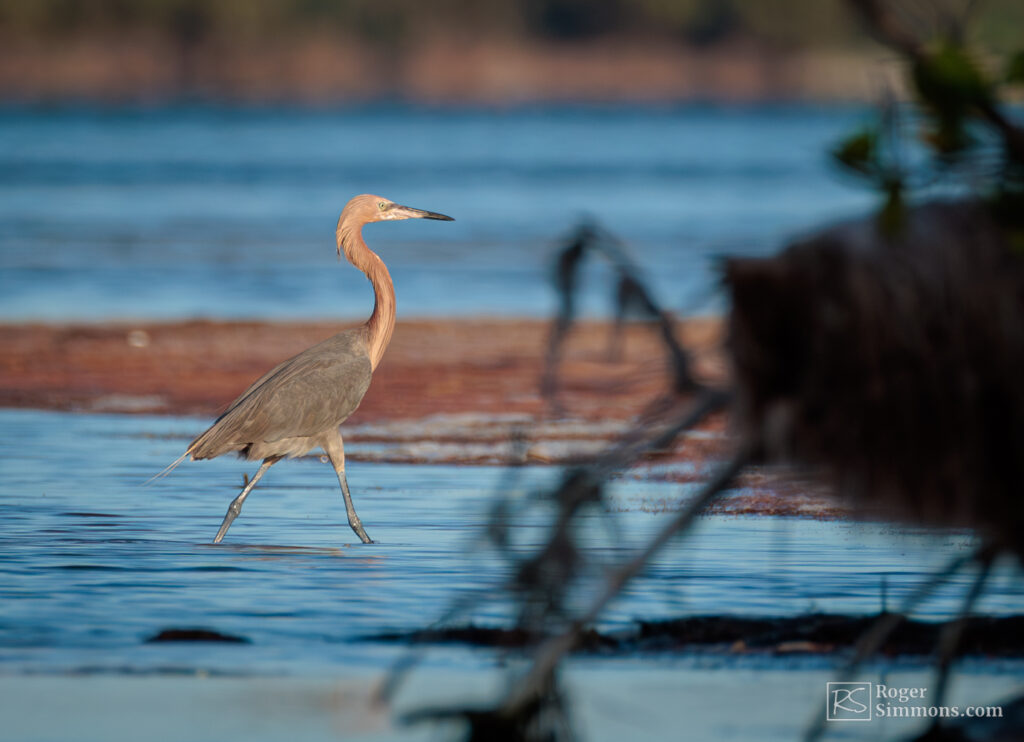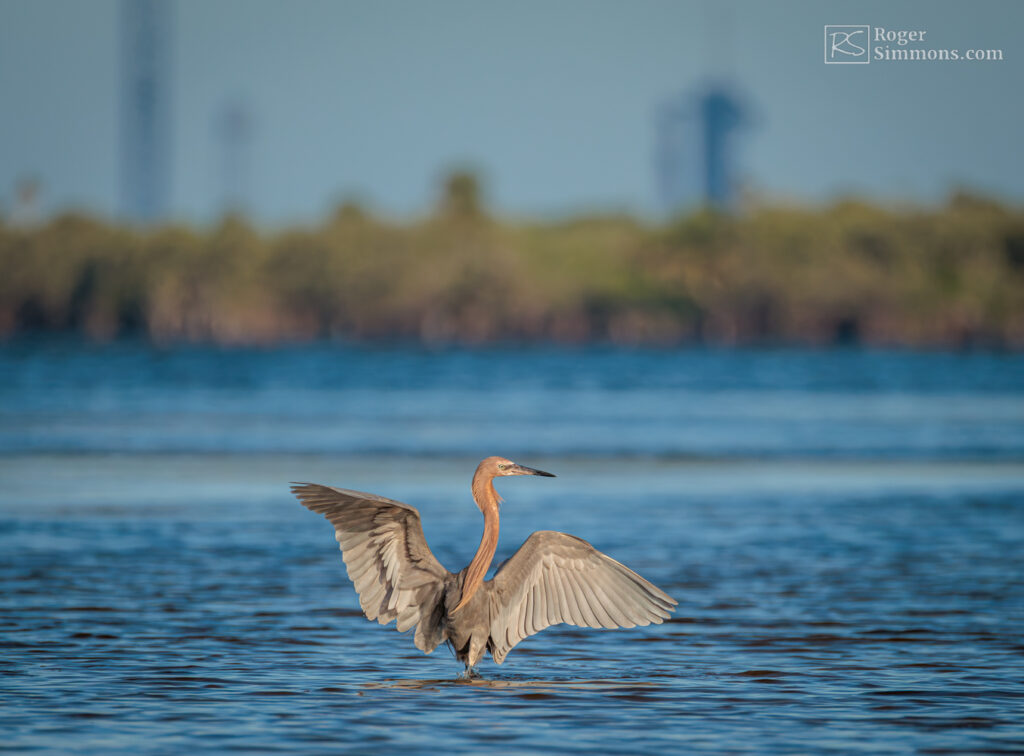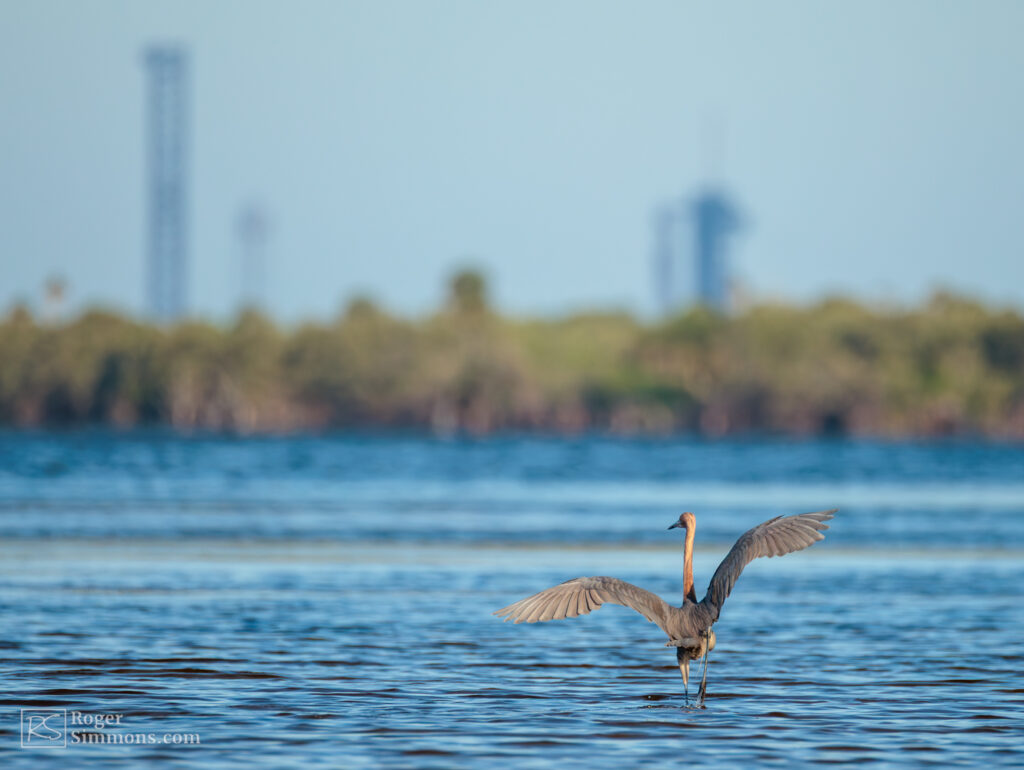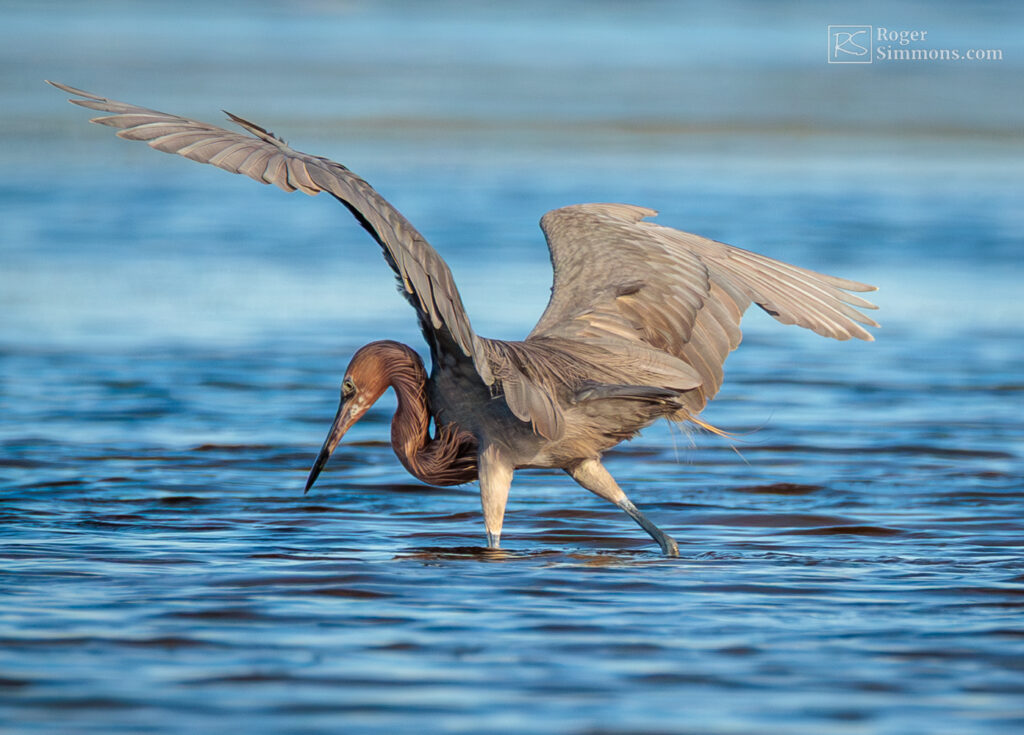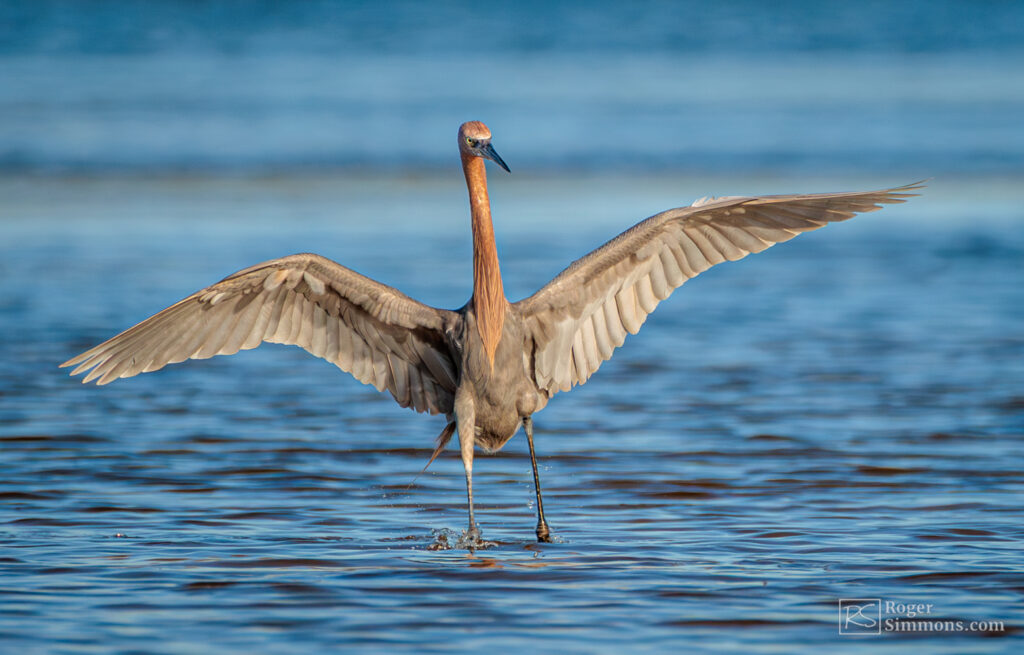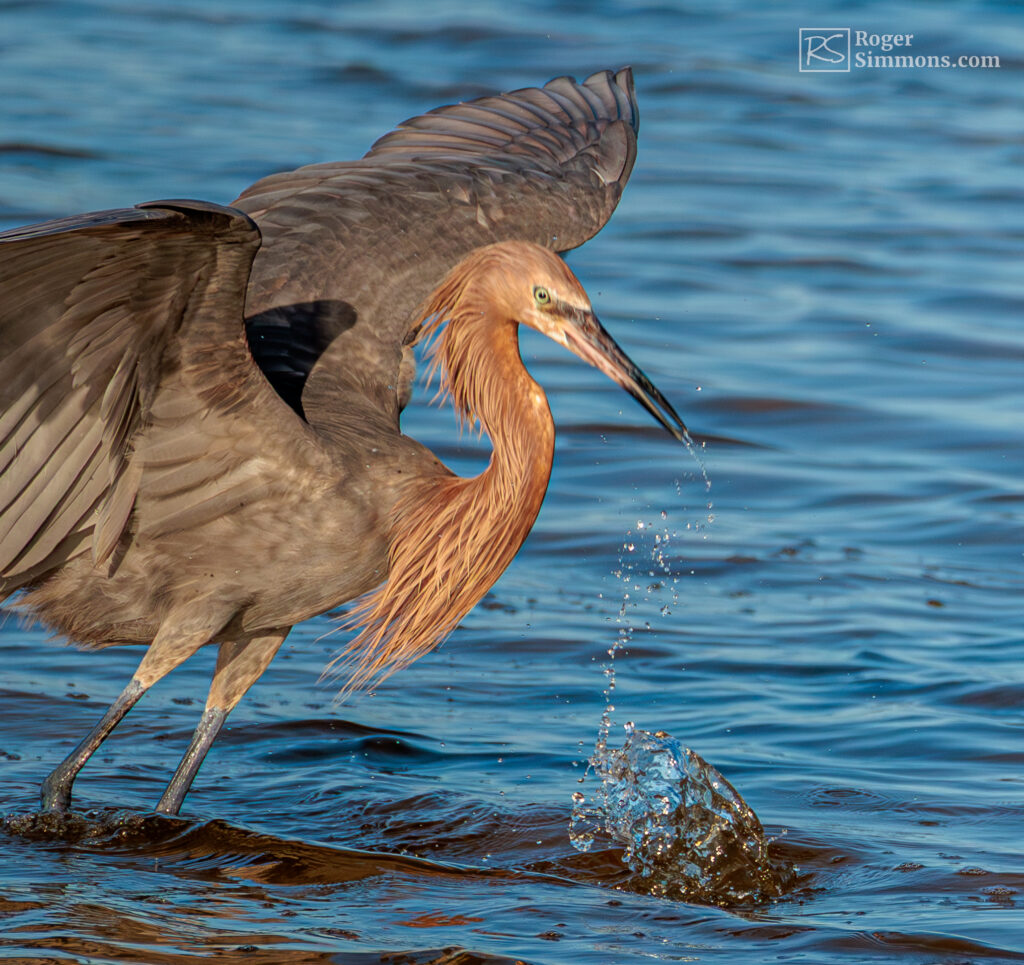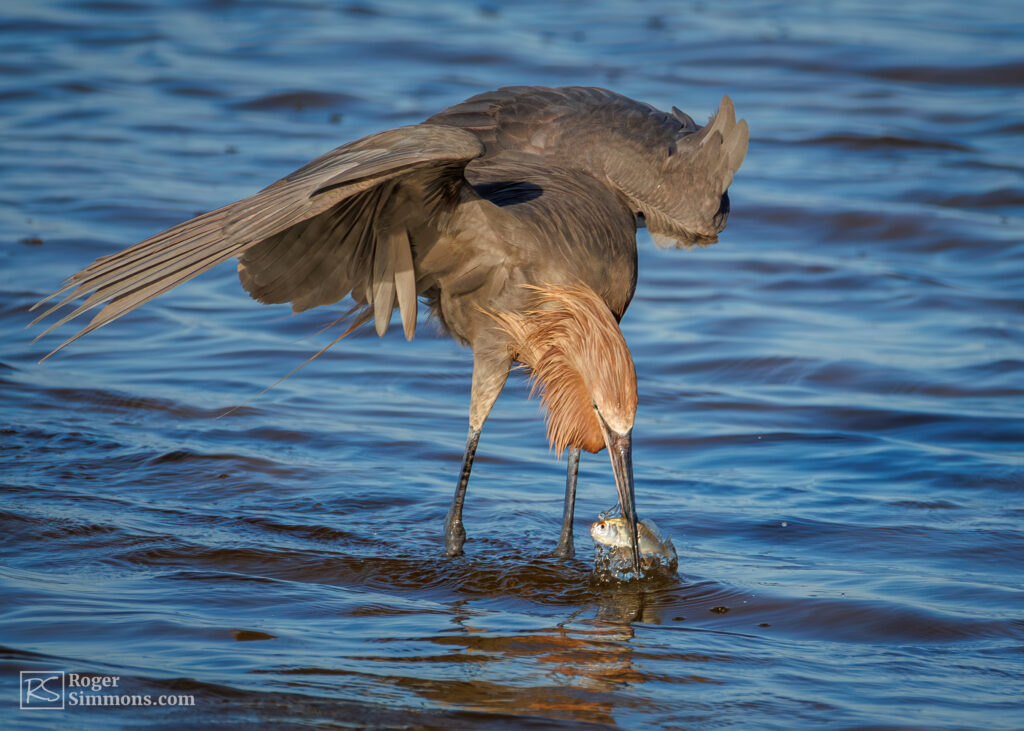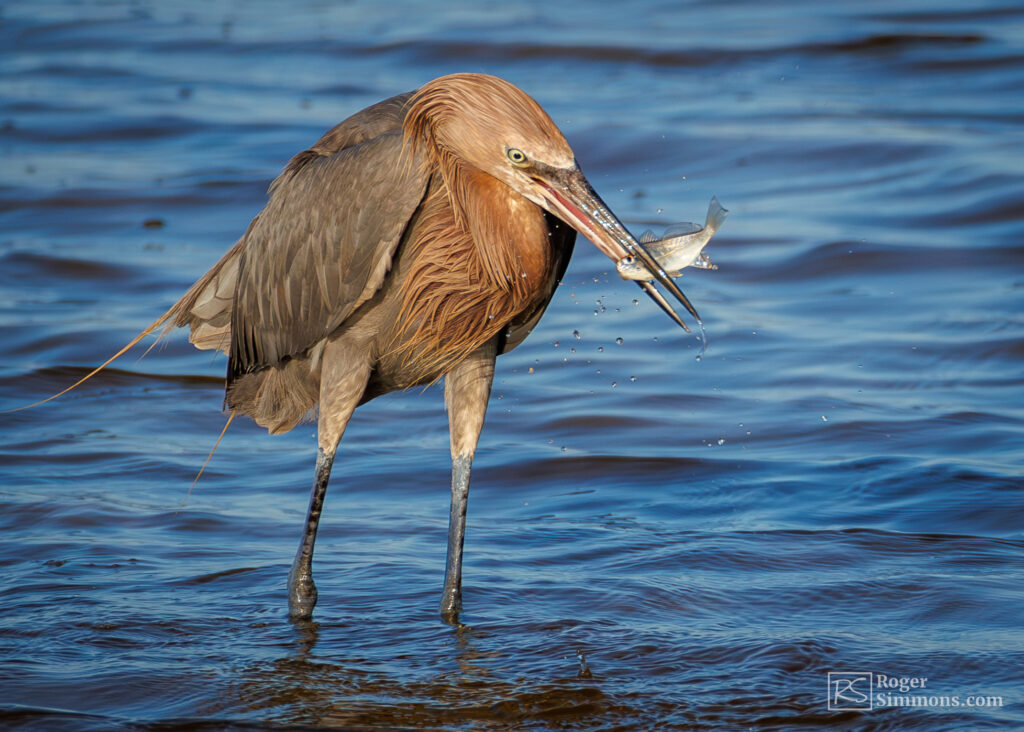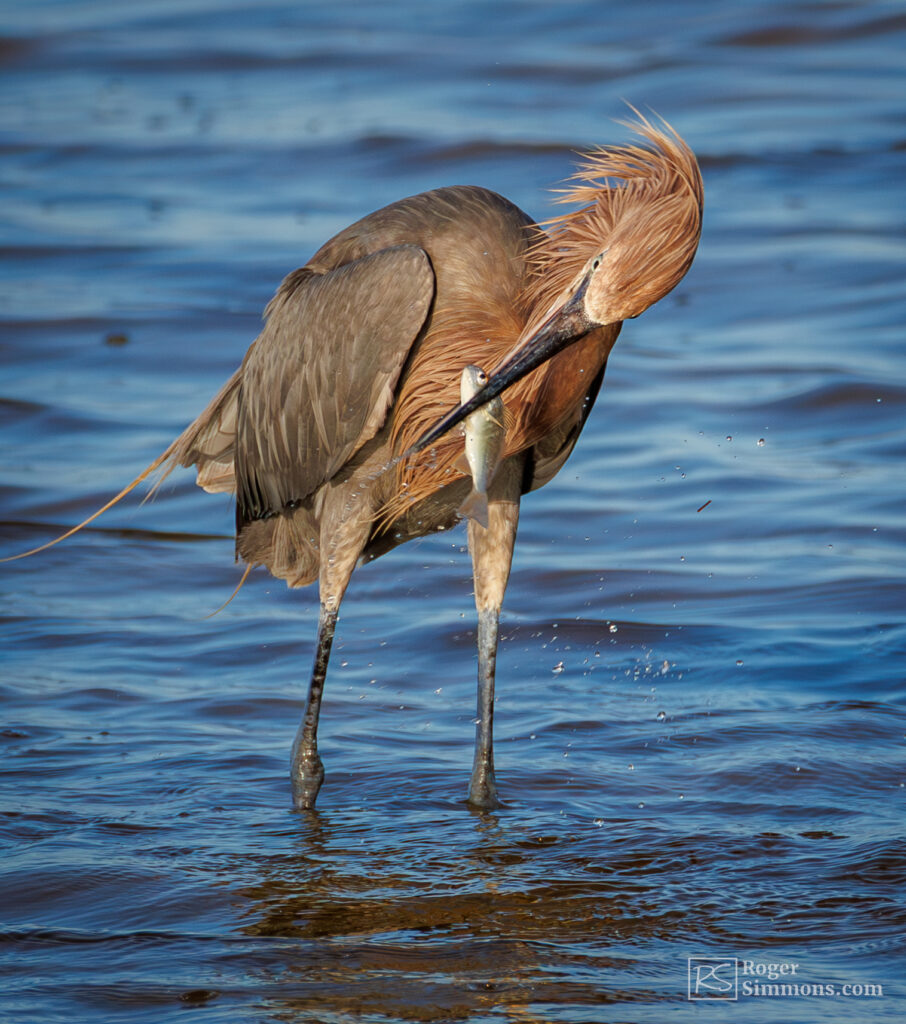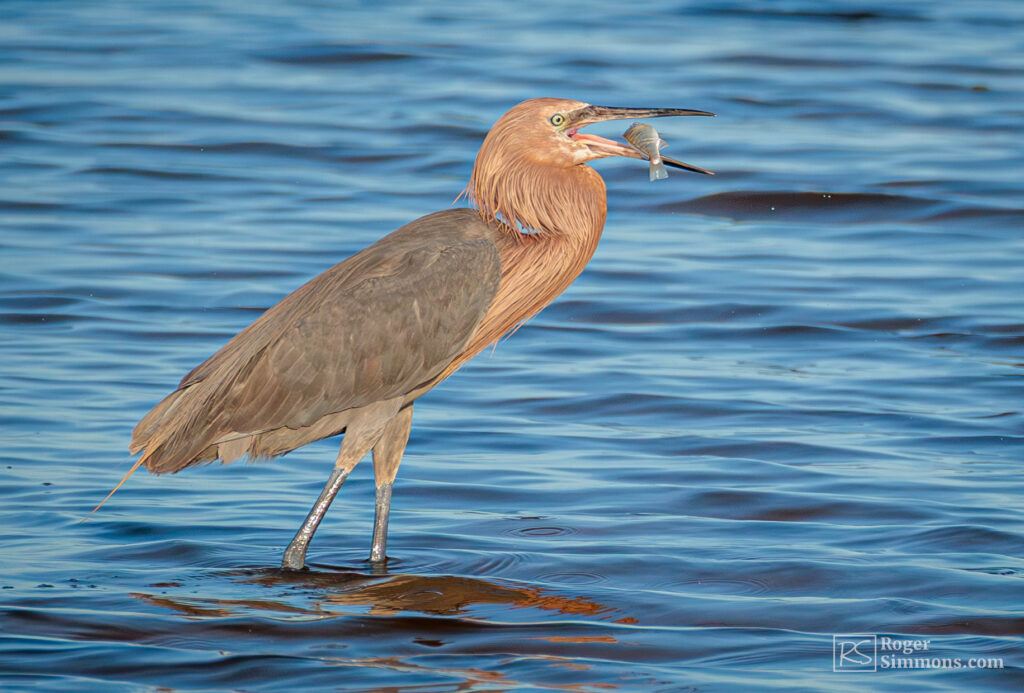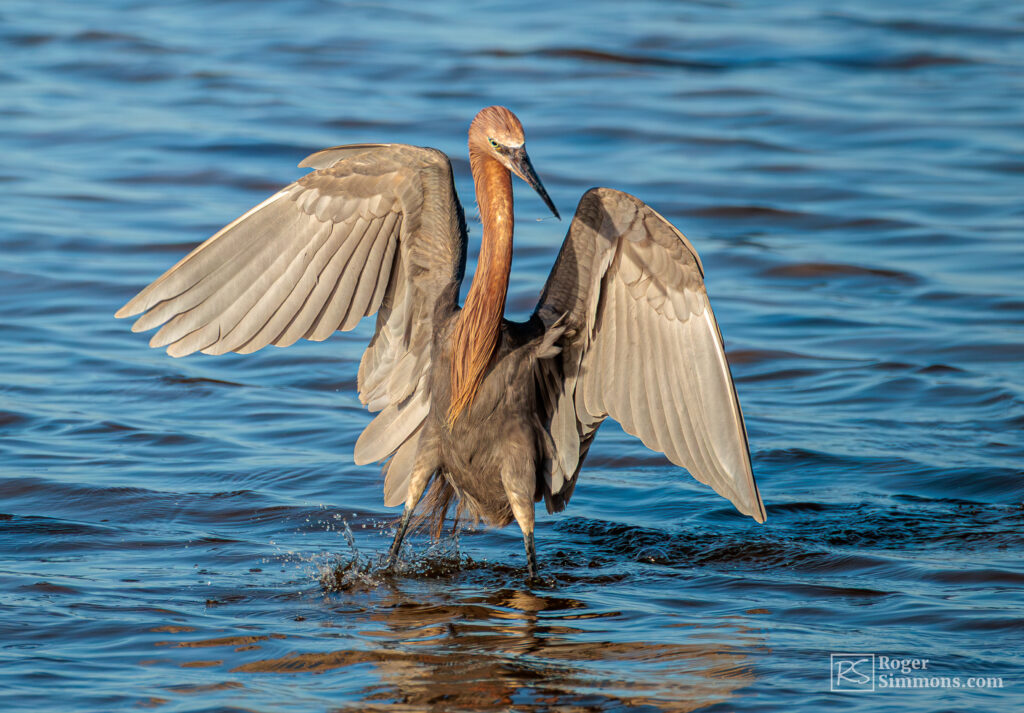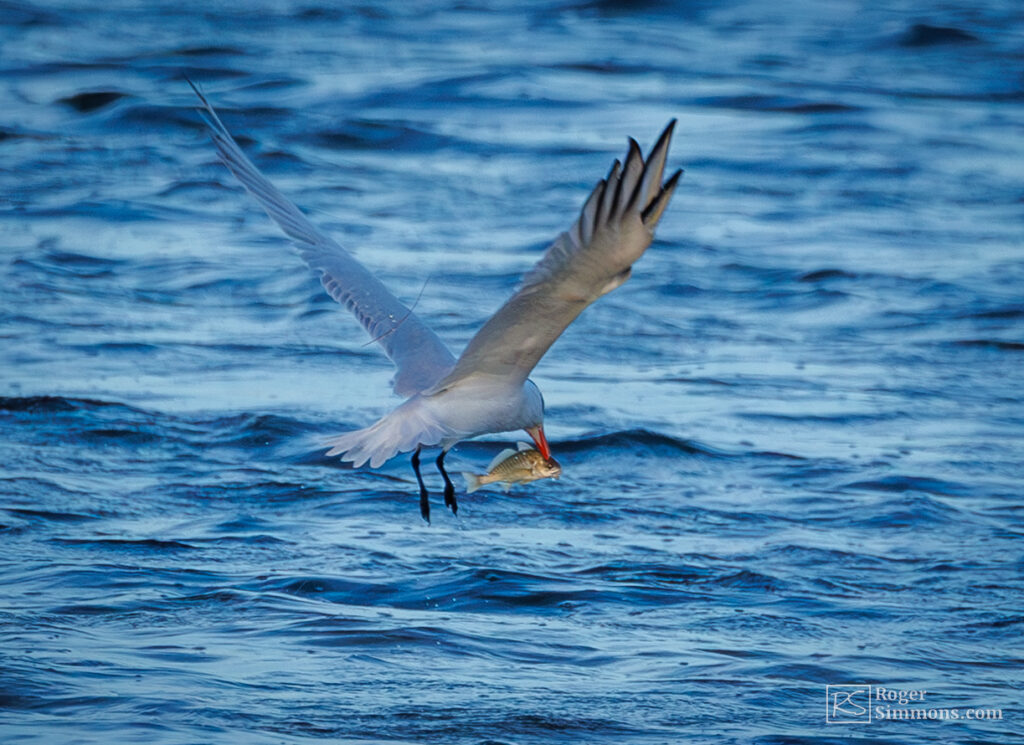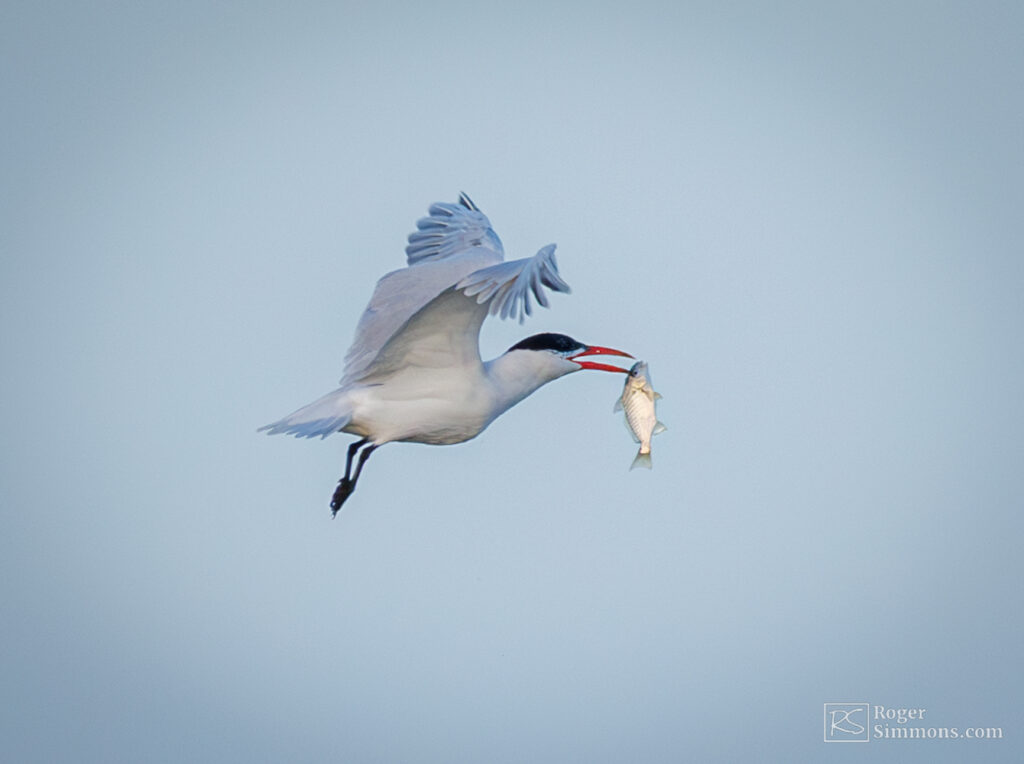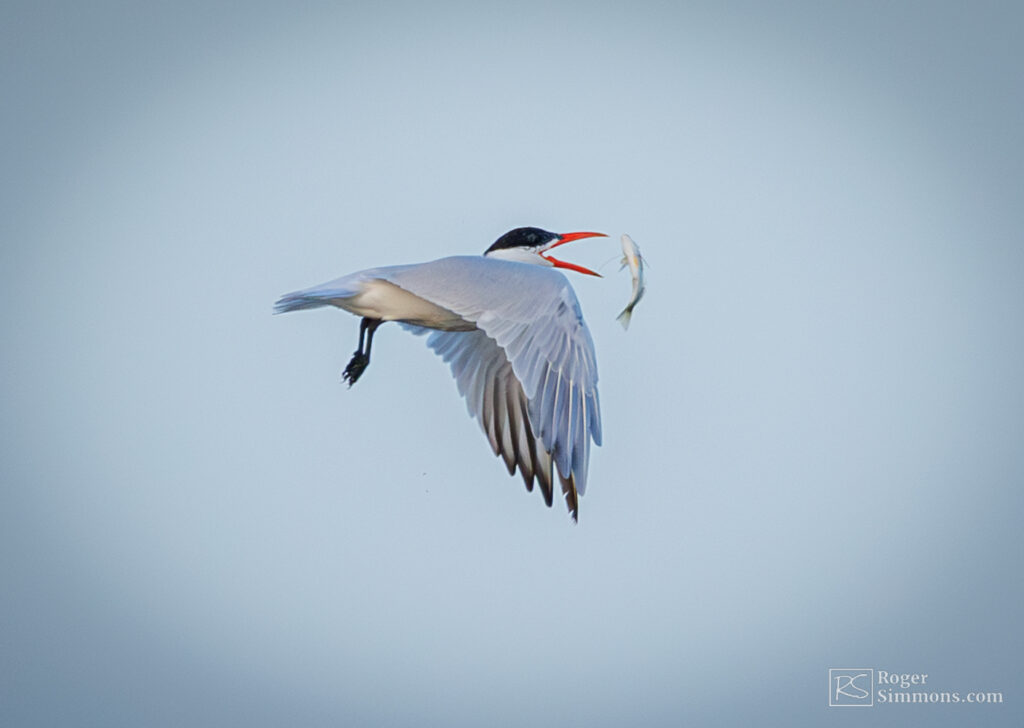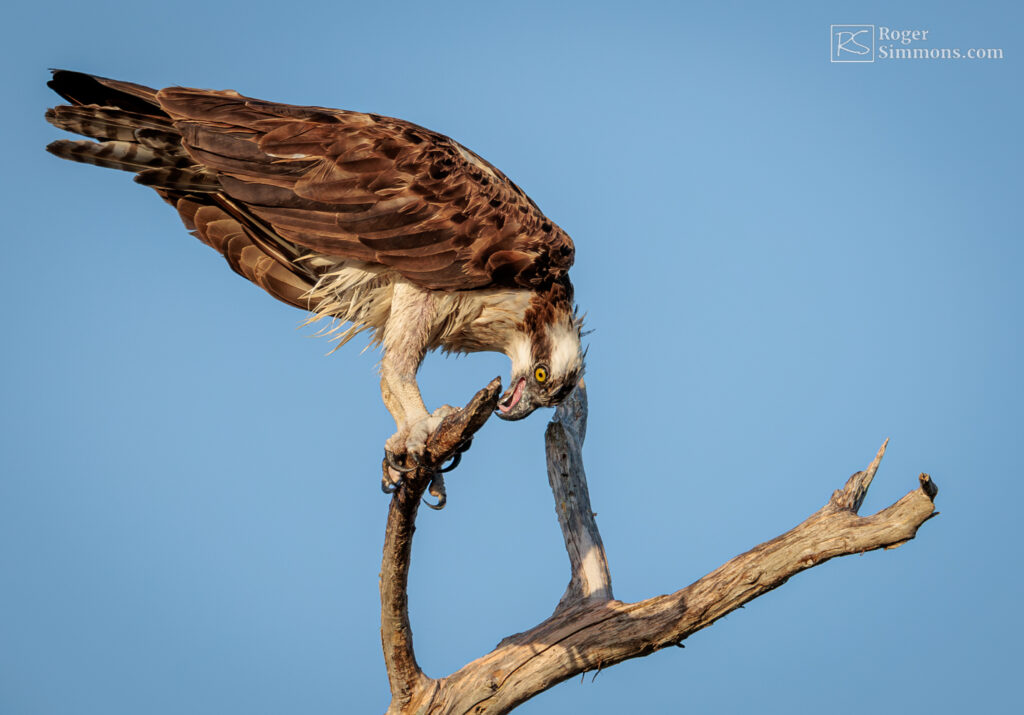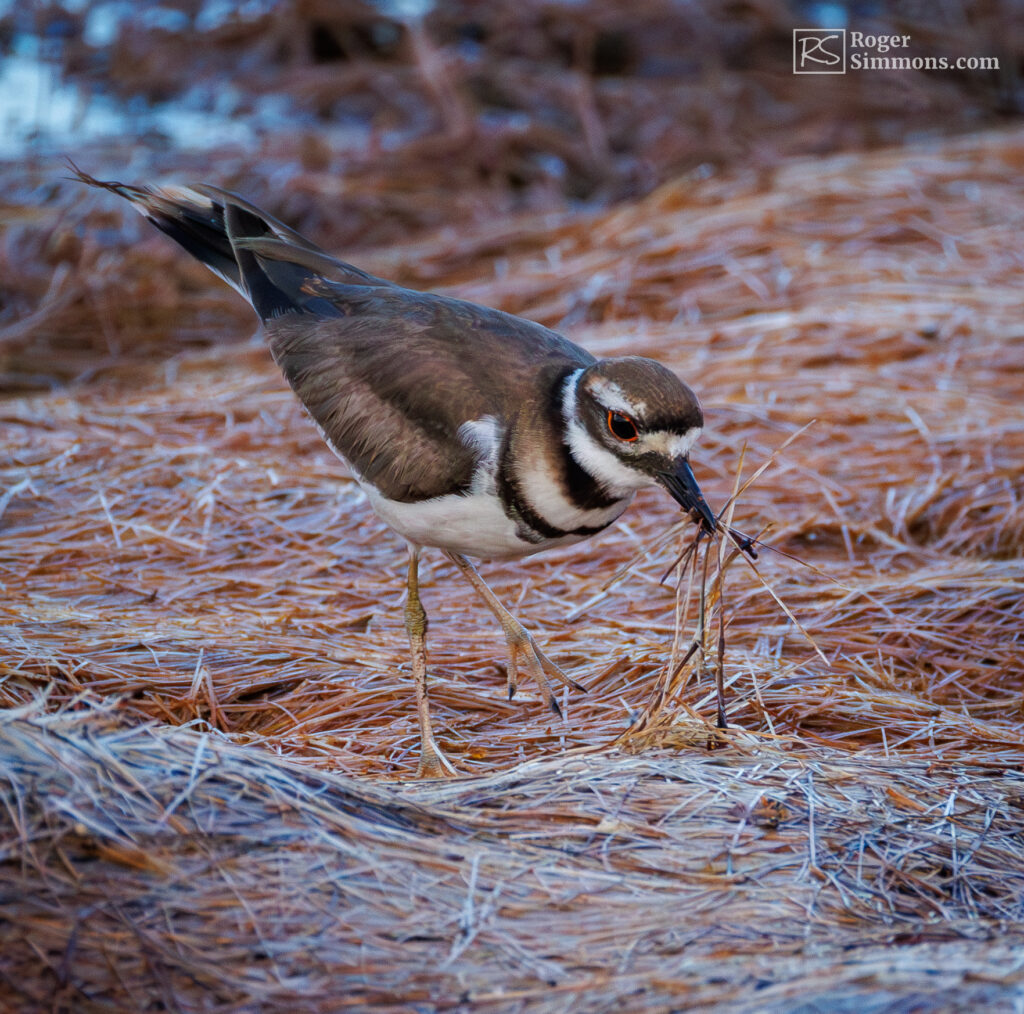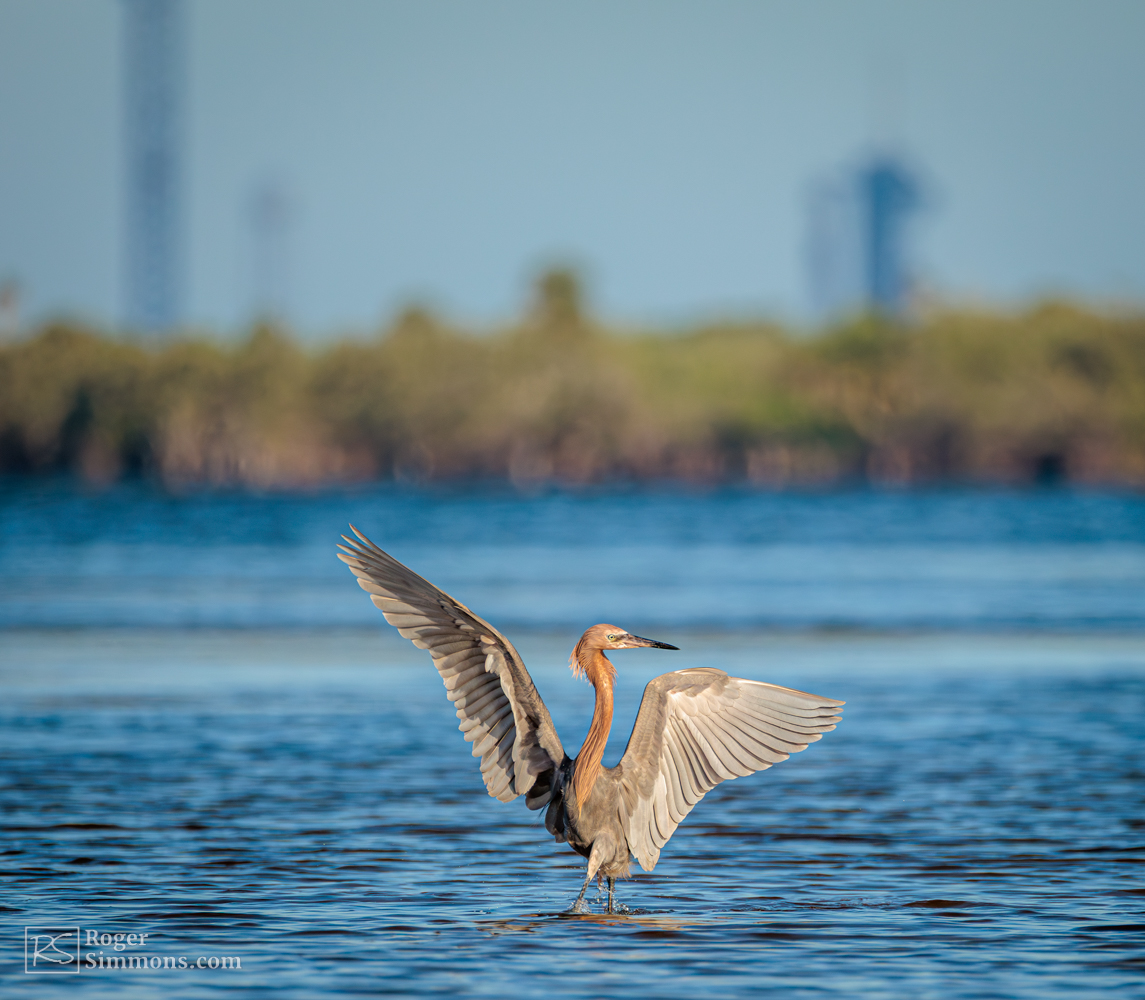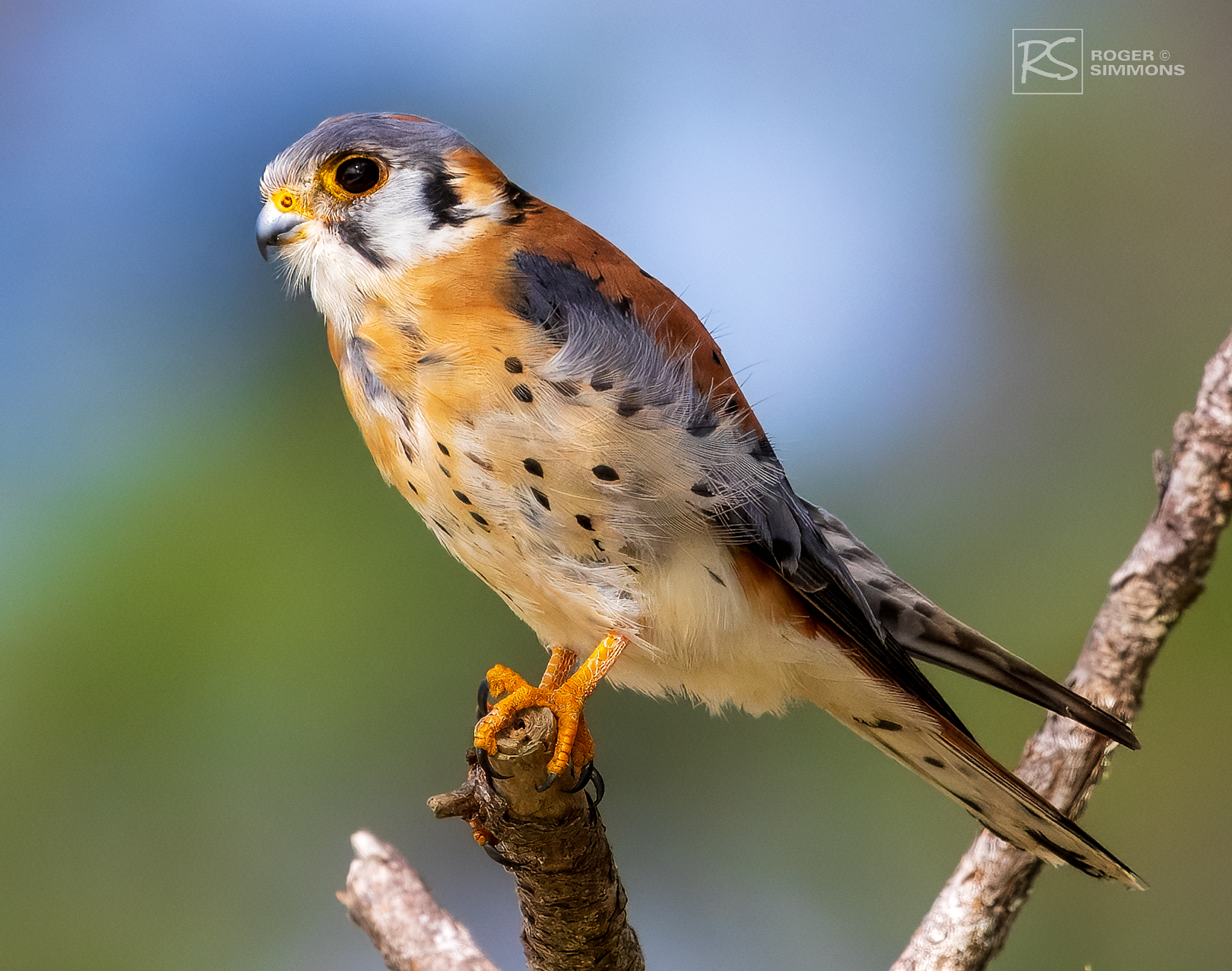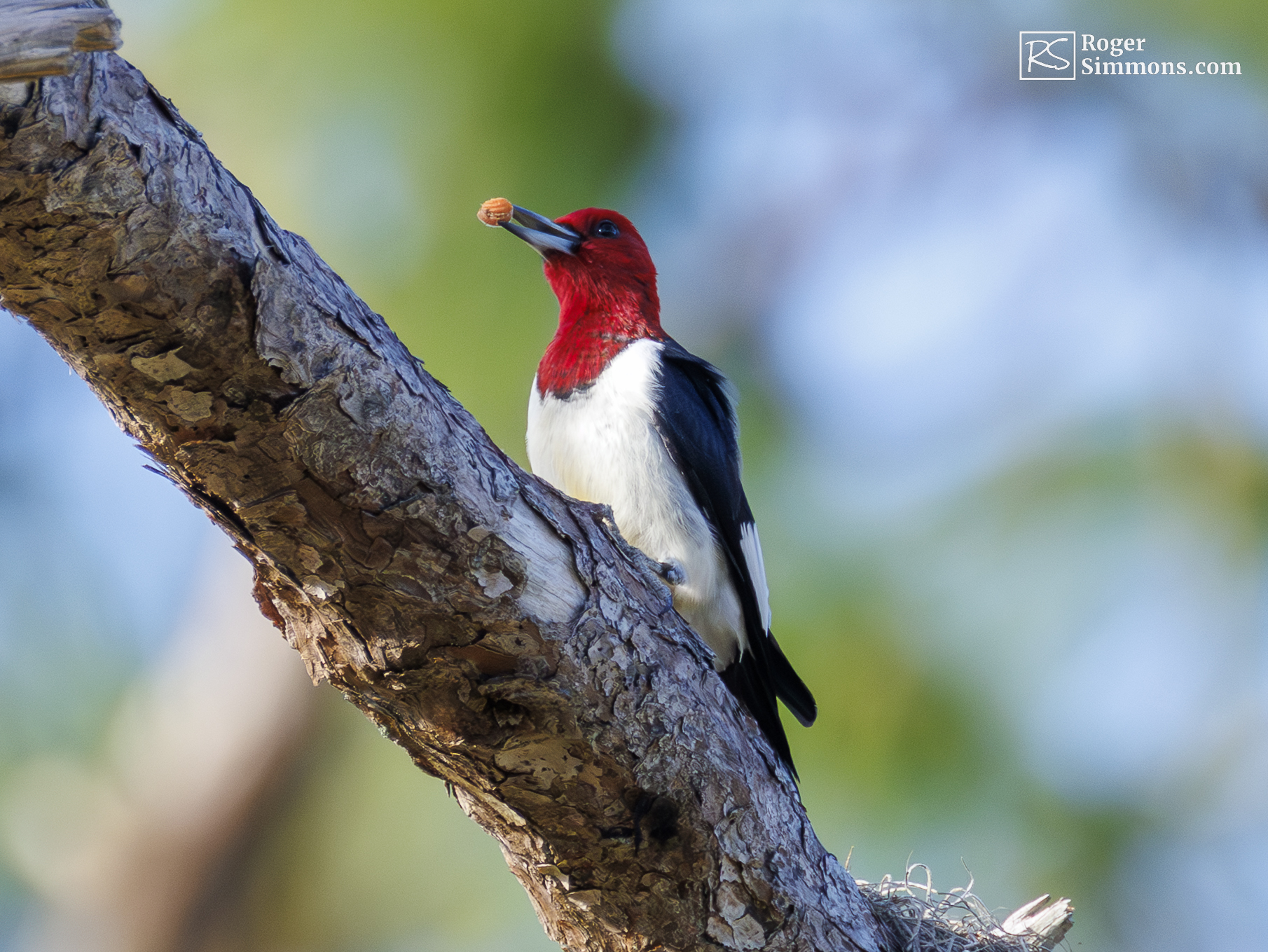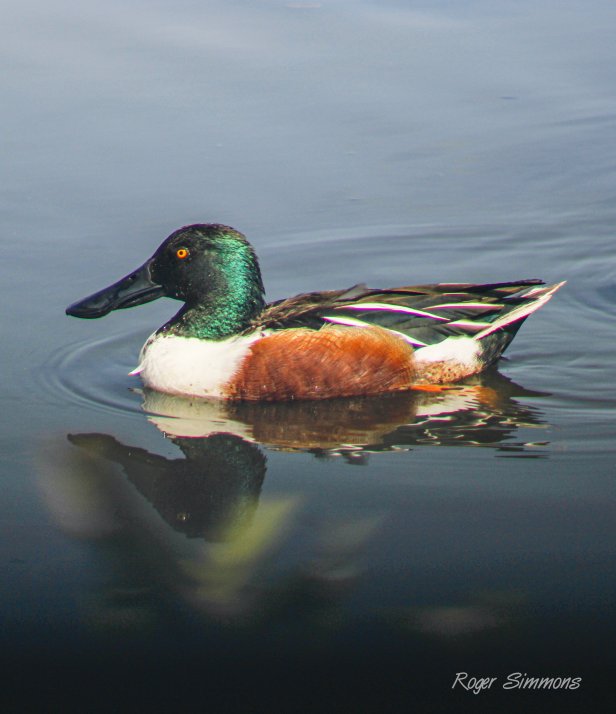Since I photographed my first one back in 2023, I’ve been fascinated with Reddish Egrets.
These odd looking members of the egret family – with their dark gray bodies, shaggy brown necks, and bills that turn pink during breeding season – are easy to spot. But what makes them so eye-catching is their hunting methods, in which they often appear to be dancing across the water while extending their wings.
I got to see a performance earlier this month at sunset along Bio Lab Road at the Merritt Island National Wildlife Refuge. The Reddish Egret danced and pranced in an area of the Indian River with NASA’s historic launch complex 39-B visible in the background. Of course, the dance was a successful one as the egret pulled in a larger than usual fish for dinner.
There’s another reason to stop and enjoy the antics of a Reddish Egret if you see one. There aren’t that many of them. The bird has lost more than 50% of its population over the past 50 years, primarily due to habitat loss and climate change.
From AllAboutBirds.org: “The 2025 State of the Birds report lists Reddish Egret as a Yellow Alert Tipping Point species, meaning that it has lost more than 50% of its population in the past 50 years but has relatively stable recent trends. Partners in Flight estimates a global breeding population of 15,000 individuals (with an estimated 2,400 breeding in the U.S.) and rates the species 15 out of 20 on the Continental Concern Score. The species is most at risk from global climate change, which brings more frequent and stronger tropical storms (causing direct mortality as well as habitat destruction). As is true for many colonial waterbirds, Reddish Egret populations decline when coastal habitats are developed and destroyed. Disturbance at nesting colonies, disturbance in foraging areas, and in some cases hunting also reduce their populations.”
While the Reddish Egret’s was the most entertaining, it wasn’t the only bird putting on a dinner-time performance along Bio Lab Road.
